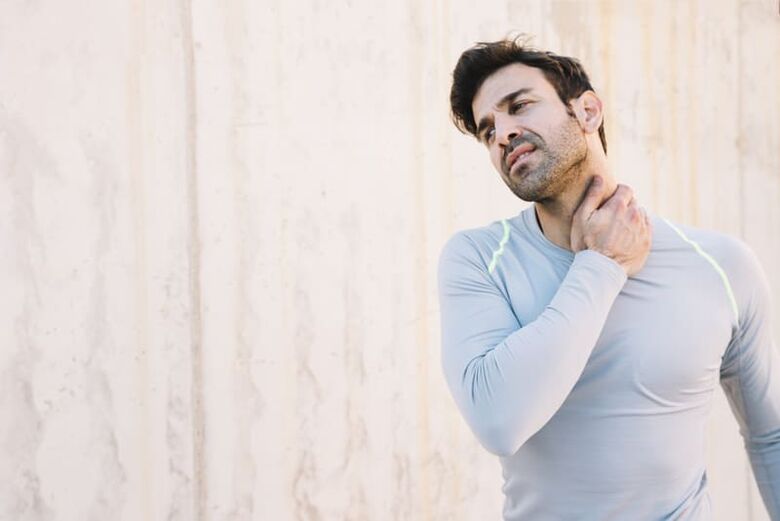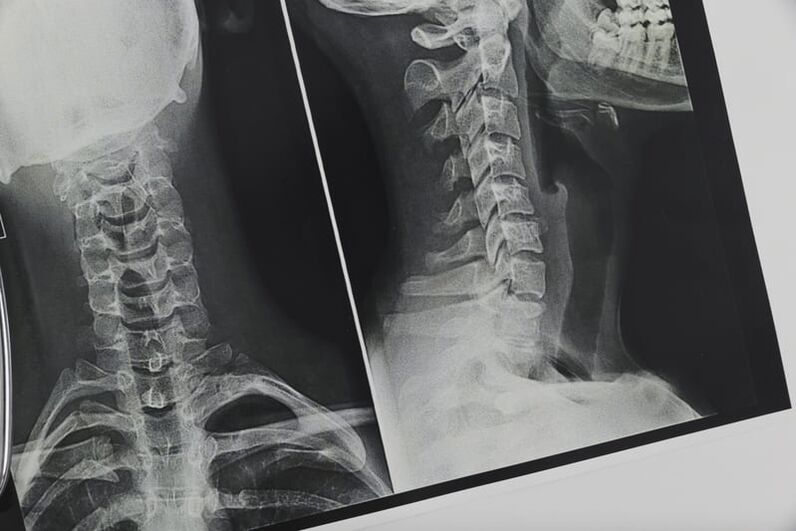
A sedentary lifestyle is becoming the key to the development of many diseases associated with musculoskeletal dysfunction. The most common disease is cervical osteochondrosis, which affects the intervertebral discs. This disease occurs suddenly and develops over a long period of time. Untimely treatment leads to a significant reduction in the quality of health.
Typical symptoms of cervical osteochondrosis:
- Headache in the back of the head;
- Dizziness;
- Pain in arms, shoulders, back;
- Cracking in the neck;
- Numbness of the limbs;
- Deterioration of vision;
- Occurrence of fatigue, muscle tension at the slightest physical exertion;
- Dizziness;
- Movement coordination is impaired.
Very small symptoms can develop into irreversible pathology of the spine. Therefore, in the case of the above signs, it is necessary to look for ways to prevent the development of the disease.

Causes and consequences of cervical osteochondrosis
The onset of the disease is due to the influence of the following factors:
- Sedentary (sitting, office) lifestyle;
- Improper diet (lack of calcium, magnesium);
- Heredity;
- Hypothermia, mechanical damage to the neck;
- Weightlifting;
- overweight;
- Drinking alcohol.
If you do not take preventive measures and do not get involved in the treatment, but only take medications that relieve pain, then complete destruction of thinned bones can occur. Also, the development of the disease leads to a change in the position of the vertebrae, compression of blood vessels. As a result, the blood begins to circulate worse, the normal functioning of the cardiovascular system is disturbed, and the activity of the brain worsens. In addition, patients often complain of migraines, decreased visual acuity, hypertension, or hypotension. The most dangerous outcome is:
- Intervertebral hernia;
- Spinal stroke;
- Vestibular syndrome;
- Vertebral artery compression.
Only timely treatment will stop the progressive development of the disease.

How to cure osteochondrosis of the cervix at home
Even after contacting qualified professionals, the patient receives a list of recommendations related to self-medication. Positive results can be achieved only by regularly performing a set of procedures, which includes anesthesia using ointments, mixtures, creams. A significant result in the prevention of cervical osteochondrosis is achieved through self-massage and gymnastic exercises.
Rub the affected area to relieve pain, normalize blood circulation and eliminate inflammation. Rubbing recipes:
- A mixture of vodka with horseradish, the root of the plant, chopped in a blender, and the liquid substance are mixed in equal proportions. The infusion is rubbed overnight for 14 days.
- A combination of olive oil, plantain and sage, herbs in a volume of 2 tablespoons are poured over the fatty substance (50 ml) and Vaseline (40 ml). The medicine is rubbed on the neck three times a day.
- Boiled potatoes are beaten and mixed with honey, after the mixture cools down a bit, it is necessary to apply it on the affected area and wrap it with foil and a tissue.
To rejuvenate and enrich the body with vitamins, you should take tinctures and decoctions. The use of kerosene is considered efficient. Plant 30 gr. dry, pour hot water (0, 5 liters) and put 3 weeks. The drug is taken 3 times a day for 1 tbsp. l.
Also, an equally popular recipe is a decoction of primrose root, which is crushed and poured over boiling water, for every 100 grams. the root needs 1 liter of water. The composition is boiled for 1, 5 hours, then take 1 tbsp. l. three times a day. The course lasts 3 weeks.

Cervical osteochondrosis can be treated with self-massage
Regular physical action on the painful area helps to stop the progression of the disease. Massage does not take much time, but requires a careful approach, studying the focus. Therefore, before proceeding with the process, it is necessary to identify areas that cannot be affected.
Self-massage procedure:
- Taking a sitting position;
- Complete relaxation of the body;
- Fingers are applied to the neck, and light caressing is performed from top to bottom for 2 minutes;
- The exercise is repeated, only with the thumbs with great effort;
- The lateral surface of the cervical spine is rubbed in circular motions;
- Muscle squeezing with shifts and pinching;
- Upon completion, caress.
The session should last 8-10 minutes.
In combination with massage, therapeutic exercises are considered effective. Exercise should be smooth and not tiring the body. Emphasis should be placed on the cervical spine, turning the head, stretching the neck, shoulder movements.

















































